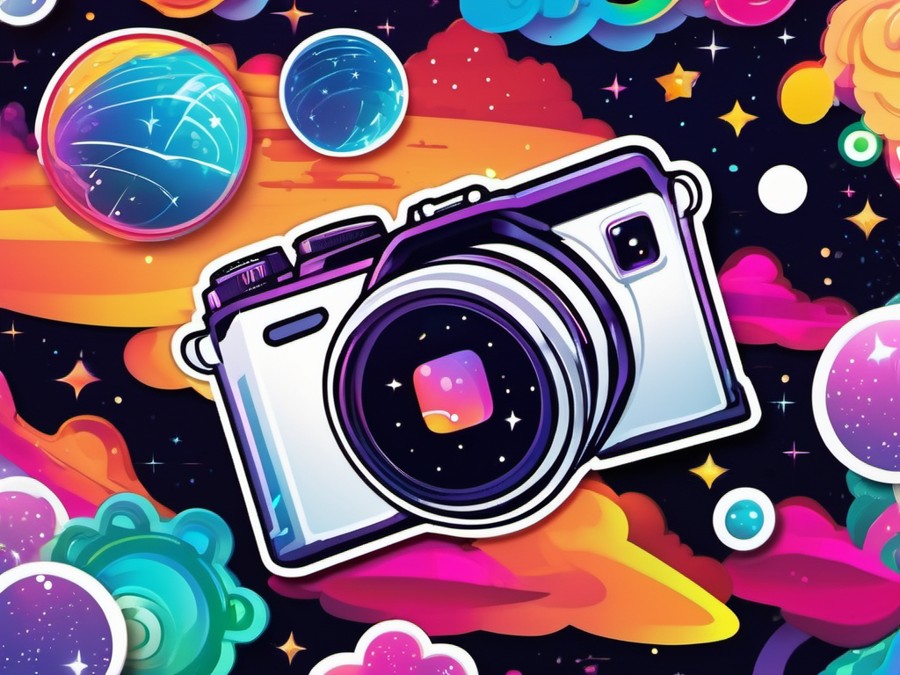· Charlotte Will · Rain Covers · 7 min read
What is the Best Rain Cover for Camera and Video Equipment?
Discover the best rain covers for cameras and video equipment to protect your investment in any weather. Learn about top options, their features, and real-world examples of rain covers saving the day. Ensure your gear stays dry and functional with our comprehensive guide.

In the world of photography and videography, weather is often unpredictable. One moment you’re enjoying a sunny day, and the next, the skies open up and pour. When it comes to protecting your expensive gear from the elements, especially rain, having a reliable rain cover is crucial. Whether you’re shooting a wedding, capturing wildlife, or filming a documentary, a good rain cover ensures that your camera and video equipment stay dry and functional.
Introduction to Protecting Your Gear
Why You Need a Rain Cover for Your Camera and Video Equipment
Any professional or hobbyist photographer knows that protecting your investment is paramount. Cameras and lenses are not cheap, and a sudden downpour can ruin your equipment if you’re not prepared. A quality rain cover keeps your gear dry and allows you to continue shooting without interruption.
Different Types of Rain Covers
There are generally two types of rain covers: universal rain covers that fit a variety of cameras and lenses, and brand-specific rain covers designed for particular models. Each has its advantages, and the best choice depends on your specific needs.
Key Features to Look For
When shopping for a rain cover, consider the following key features:
- Material and durability: Look for sturdy materials that can withstand harsh weather conditions.
- Ease of use and installation: The cover should be easy to put on and take off, especially in a hurry.
- Compatibility with various gear: Versatility is key, as you might need to use it with different cameras or lenses.
Top Rain Covers for Cameras
Best All-Around Rain Cover: Peak Design Shell
The Peak Design Shell is a top-rated choice for many photographers. It offers a great balance of durability, ease of use, and compatibility with various gear. The shell fits most DSLRs and mirrorless cameras, making it a versatile option.
Pros:
- Lightweight and compact design
- Made from high-quality materials
- Excellent fit for most cameras
Cons:
- May not be as robust as some other options
- Slightly more expensive than budget choices
Best Budget-Friendly Option: Altura Photo Rain Cover
For those on a budget, the Altura Photo Rain Cover is an excellent choice. It provides solid protection at a fraction of the cost of more expensive options.
Pros:
- Very affordable
- Universal fit for most cameras
- Sturdy material that lasts
Cons:
- Not as feature-rich as higher-end covers
- Slightly bulkier design
Best for DSLRs: Vortex Media Storm Jacket
The Vortex Media Storm Jacket is specifically designed with DSLRs in mind. It offers excellent protection and a great fit for larger cameras.
Pros:
- Perfect fit for DSLRs
- High-quality materials
- Easy to use in a hurry
Cons:
- May be bulkier than some other covers
- Not as versatile for smaller cameras or mirrorsless models
Best for Mirrorless Cameras: Think Tank Hydrophobia
Mirrorless cameras have become increasingly popular, and the Think Tank Hydrophobia is a great option for these models. It offers excellent protection and a lightweight design.
Pros:
- Lightweight yet durable
- Perfect fit for mirrorless cameras
- Easy to use and install
Cons:
- May not fit larger DSLRs as well
- Slightly more expensive than some other options
Top Rain Covers for Video Equipment
Best All-Around Video Rain Cover: Porta Brace Professional Camera Rain Cover
The Porta Brace Professional Camera Rain Cover is a favorite among videographers. It offers excellent protection and versatility for various video setups.
Pros:
- Universal fit for most cameras and lenses
- High-quality materials
- Easy installation
Cons:
- May be bulkier than some other options
- Slightly more expensive
Best for Lightweight Setups: DriPCloth Rain Defender
For those with lightweight setups, the DriPCloth Rain Defender is a great choice. It offers solid protection in a compact and lightweight design.
Pros:
- Very lightweight and portable
- Affordable option
- Good protection for small setups
Cons:
- May not be as sturdy for larger setups
- Slightly less feature-rich than premium options
Best for Professional Setups: Redrock Micro Rain Cover
For professional videographers with heavier setups, the Redrock Micro Rain Cover is a top choice. It offers excellent protection and durability for more demanding use.
Pros:
- Highly durable materials
- Excellent fit for larger setups
- Easy to install and use
Cons:
- More expensive than some other options
- May be bulkier for smaller setups
Tips for Using Your Rain Cover Effectively
Preparing Your Gear Before Shooting in the Rain
Before venturing out into the rain, it’s crucial to prepare your gear properly. This includes:
- Cleaning your lenses with a microfiber cloth to remove any dust or debris.
- Ensuring all components of your camera and video equipment are dry to avoid condensation issues.
Properly Installing and Securing Your Rain Cover
Installing your rain cover correctly is vital. Follow these steps:
- Unfold the rain cover and align it with your camera or video setup.
- Secure the straps to keep the cover in place, ensuring a snug fit.
- Test the cover to make sure it’s secure and watertight before starting your shoot.
Caring for Your Rain Cover After Use
After a long day in the rain, it’s important to care for your rain cover properly. Here are some tips:
- Clean the cover with a damp cloth to remove any dirt or residue.
- Allow it to dry completely before storing to prevent mold or mildew growth.
- Store the cover in a dry place, preferably with some desiccant to keep moisture away.
Real-World Examples: When a Rain Cover Saved the Day
Story Time: The Wedding Photographer and the Surprise Storm
Imagine this: you’re in the middle of a beautiful wedding shoot when suddenly, the skies darken and a torrential downpour begins. Thanks to their trusty rain cover, the photographer was able to continue capturing stunning moments, saving the day and ensuring that the bride and groom got the photos they dreamed of.
Story Time: The Wildlife Documentarian and the Torrential Downpour
In another scenario, a wildlife documentarian was out in the field when a sudden storm hit. With their camera and video equipment secured under a high-quality rain cover, they were able to capture incredible footage of animals in the rain, resulting in a breathtaking documentary.
Conclusion
Investing in the best rain cover for your camera and video equipment is crucial to protect your gear and ensure that you can capture stunning photos and videos no matter the weather. With a wide range of options available, from budget-friendly to high-end premium choices, there’s a rain cover out there for every photographer and videographer.
FAQs
Q1: Can I use a plastic bag as a rain cover?
While it might seem like a quick fix, using a plastic bag as a rain cover is not recommended. Plastic bags can easily tear or become punctured, leaving your gear exposed to the elements. They also don’t allow for easy access and adjustments while shooting.
Q2: How do I protect my camera from humidity?
To protect your camera from humidity, consider using a dehumidifier pack inside your camera bag. These packs absorb moisture, helping to keep your gear dry and preventing mold or mildew growth.
Q3: What should I do if my camera gets wet without a cover?
If your camera gets wet without a cover, take the following steps immediately:
- Turn off the camera.
- Remove the battery and memory card to prevent any further damage.
- Wipe off excess water gently with a cloth.
- Place the camera in a dry, well-ventilated area and let it air out for at least 24 hours before attempting to turn it on again.
Q4: Are there any additional accessories I should use?
In addition to a rain cover, consider using other protective accessories such as lens filters and camera covers. These can provide an extra layer of protection and help keep your gear in top condition.
Q5: How often should I replace my rain cover?
The lifespan of your rain cover depends on how often you use it and the conditions it’s exposed to. If you notice any signs of wear, such as tears or weakened material, it’s time to replace your rain cover to ensure continued protection for your gear.
By understanding the importance of using a quality rain cover and selecting the right one for your needs, you can capture amazing photos and videos in any weather. Whether you’re a seasoned professional or a hobbyist photographer, investing in the best rain cover will pay off in the long run.




